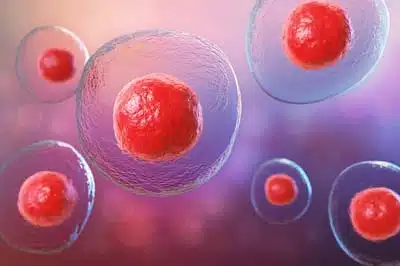
Mesenchymal Stem Cells
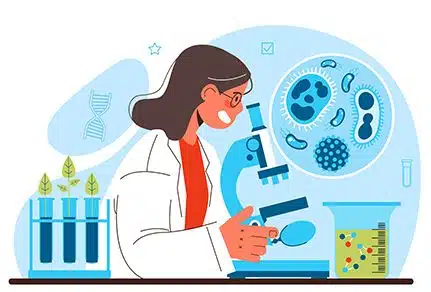
Stem cells have become a hot topic in health today. You’ve likely heard about these incredible cells, tiny building blocks that can transform into different types of cells in our bodies.
Over the past few years, stem cell research has made significant strides, offering promising potential for treating many conditions. While there have been some debates and controversies surrounding stem cell research, scientists continue to explore their incredible potential in the laboratory.

Stem cells possess remarkable regenerative capabilities and hold immense potential for revolutionizing medicine. Ongoing research has demonstrated significant promise for stem cell-based therapies in treating various health conditions.
Stem Cells 101
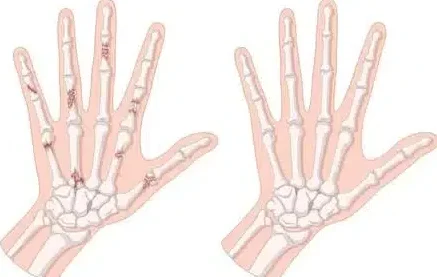
The human body possesses a remarkable capacity for healing. Everyday occurrences such as minor cuts healing and broken bones mending and strengthening exemplify the ability to self-regenerate in youth. These instances showcase the body’s ability to repair and regenerate, a testament to its incredible complexity and resilience.
The remarkable capacity of the human body to heal itself is mainly due to stem cells. These unique cells can differentiate into various cell types and play a crucial role in tissue repair and regeneration throughout life.

Unlike detrimental lifestyle choices such as excessive alcohol consumption or poor dietary habits, stem cells represent the body’s intrinsic healing mechanism. They are responsible for the remarkable ability of the body to mend itself after injuries, such as bone fractures or tissue damage.
When you are a child, your stem cells are alive and kicking. As an adult, you may also notice how much energy kids have and how quickly they heal from injuries. If you recall your younger days, you might remember experiencing something similar.

That is because your stem cells were hitting on all cylinders and were populous in your system. A broken bone, a scraped-up elbow, or a massive bruise you got while playing football would heal up in no time flat.
Many young and healthy stem cells make rapid healing possible. But then you start getting older. Our bodies thrive when we have a robust supply of stem cells. These remarkable cells act as internal repair systems, constantly renewing and rejuvenating our tissues.
Stem Cell Treatment Process:
Stem cell treatment typically involves a series of injections. During the procedure, the patient lies on a table while intravenous administration delivers the stem cells into the bloodstream. The duration of the procedure can vary significantly, ranging from approximately 30 minutes to several hours, depending on the severity of the condition and the required dosage.
Stem Cell Treatment Outcomes:
Stem cell therapy aims to introduce healthy stem cells into the body. These cells can then migrate to areas of damaged tissue and promote regeneration. However, it’s essential to understand that individual results can vary greatly.
While many clients will notice improvements in their overall health and well-being, others may not experience the same level of noticeable changes.
This variation in response is a natural aspect of stem cell therapy and highlights the importance of realistic expectations.
Types of Stem Cells
Now, let’s explore the fascinating world of stem cells in more detail. This list provides an overview of common stem cell types, empowering you to make informed decisions about your treatment options.

Adult stem cells (ASC)
Also known as somatic stem cells, Adult Stem Cells (ASCs) are found in various tissues throughout the body, including muscle, fat, bone, brain, and skin. These undifferentiated cells play a crucial role in tissue repair and regeneration within the specific tissue from which they originate.
Stem cells derived from bone marrow are intended for conditions affecting bone or blood-related tissues. However, using fat-derived stem cells for a knee injury may be less effective, as their primary function is to regenerate tissues within the adipose (fat) tissue itself.
It’s important to understand that ASCs’ therapeutic potential is often most pronounced when used to treat conditions within the same tissue or organ system from which they were extracted.
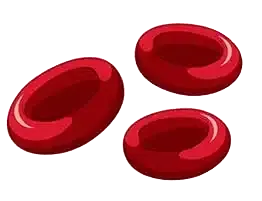
Hematopoietic stem cells
Hematopoietic stem cells, as the name suggests, are primarily found within the blood and bone marrow. The prefix “Hema-” signifies a blood connection. These stem cells are critical in forming various blood cells, including red blood cells, white blood cells, and platelets.
Hematopoietic stem cell transplantation is a crucial medical intervention for conditions such as blood cancers (like leukemia and lymphoma) and certain immune deficiencies.
Epithelial Stem Cells: Epithelial stem cells are found within epithelial tissues, which cover the surfaces of the body, such as the skin, lining of the respiratory tract, and digestive tract. These stem cells are absorbing in aesthetics due to their potential to regenerate and rejuvenate the skin. By harnessing the regenerative capabilities of epithelial stem cells, medical professionals can explore innovative approaches to address skin aging, such as minimizing wrinkles and improving skin texture.
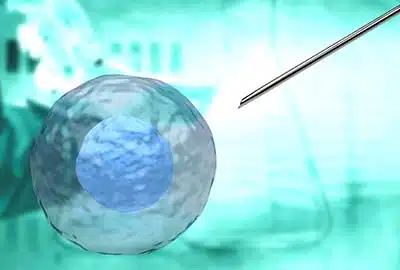
Embryonic stem cells
Embryonic stem cells are characterized by their pluripotency, meaning they can differentiate into any cell type in the human body. Contrary to common misconception, these stem cells are not directly extracted from a pregnant woman.
According to the University of Nebraska Medical Center, human embryonic stem cells are derived from the inner cell mass of an embryo created through in vitro fertilization (IVF).

Mesenchymal stem cells (MSCs)
Mesenchymal Stem Cells (MSCs), or stromal stem cells, are multipotent cells that can differentiate into various cell types, including bone, cartilage, muscle, and fat. They are found in multiple tissues throughout the body, including bone marrow, adipose tissue (fat), and the umbilical cord.
MSCs derived from sources such as umbilical cord blood and amniotic fluid have garnered significant attention in regenerative medicine due to their potential for robust proliferation and differentiation.
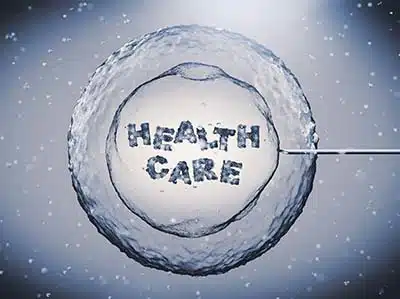
Why are Stem Cells Important?
Stem cells play a critical role in numerous biological processes.
1.Development and Growth: During embryonic development, stem cells are essential for forming and growing all organs and tissues. They serve as the building blocks of the human body.
2. Tissue Repair and Regeneration: Stem cells are crucial for tissue repair and regeneration throughout life. They replace damaged cells and contribute to healing following injuries, such as cuts, broken bones, and more serious conditions.
3. Disease Treatment: Stem cell research holds immense promise for treating various diseases. Ongoing research explores the potential of stem cell therapies in organ transplantation, regenerative medicine, and treating conditions like cancer, neurodegenerative diseases, and autoimmune disorders.
By harnessing the regenerative power of stem cells, researchers aim to improve human health and longevity, enabling individuals to live longer, healthier, and more fulfilling lives.
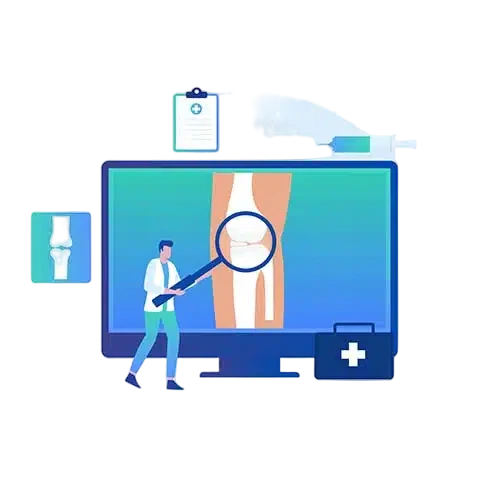
What do Stem Cells Do?
Stem cells play a crucial role in tissue repair and regeneration. They can differentiate into various cell types, replacing damaged tissues and accelerating the healing process.
Stem cells are introduced into the body from an external source. They are typically targeted to specific areas of injury or degeneration.
Consider the example of knee osteoarthritis: Years of wear and tear can significantly damage the cartilage in the knees of athletes and active individuals. As they age, many face the prospect of knee replacement surgery. However, stem cell therapy offers a potential alternative. By injecting stem cells into the damaged knee joint, there is the possibility of stimulating cartilage regeneration and restoring joint function.
In this and many other cases, stem cell therapy aims to regenerate damaged tissues, alleviate pain, and ultimately improve the quality of life by restoring mobility and function.
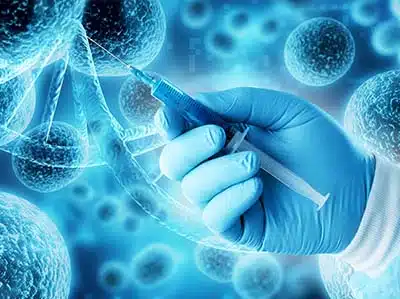
What can Stem Cells be Used For?
Many individuals find the prospect of undergoing surgery daunting. Surgical procedures often involve anesthesia, carry inherent risks and potential side effects, and require significant recovery time.
For example, recovering from rotator cuff surgery can take several months, while knee, hip, and ankle surgeries require prolonged rehabilitation. Stem cell therapy offers a potentially less invasive alternative for some individuals. By harnessing the body’s natural regenerative capabilities, stem cell treatments may address various health concerns without significant surgery.
Potential applications of stem cell therapy include:
1.Addressing musculoskeletal issues: Cartilage regeneration in joints like the knee, potentially reducing the need for knee replacement surgery.
2. Improving skin health: Stem cell therapies may have anti-aging and skin rejuvenation applications.
3. Managing chronic pain: Stem cell treatments may offer potential benefits in managing chronic pain conditions.
Treating certain diseases: Research is ongoing to explore the potential of stem cell therapy in treating various diseases, including neurodegenerative disorders and certain types of cancer.
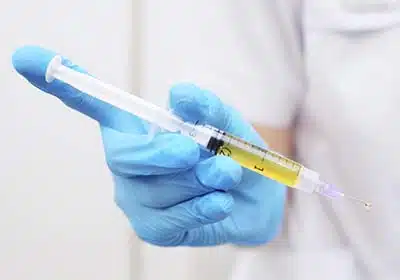
However, as we age, the production of stem cells naturally declines. Not only do we produce fewer stem cells, but their strength and regenerative capacity also diminish. This decline can manifest in various ways, such as slower healing times, persistent aches and pains, and a noticeable decrease in skin elasticity. These are all common signs of the aging process.
Many individuals seek innovative therapies to address the effects of aging and regain a sense of youthful vitality. Traveling to specialized clinics often involves this, demonstrating a significant interest in harnessing the power of stem cells to improve overall health and well-being.

Stem Sell Injection Cost
Stem cell injections can be a significant financial investment, often costing between $5,000 and $25,000 or more, depending on the specific treatment and the individual’s needs.
Unfortunately, most health insurance plans do not currently cover the cost of stem cell therapies, making them an out-of-pocket expense for many patients. This can be particularly challenging when multiple treatment sessions are required.
At HGH Vallarta, we offer high-quality stem cell treatments at a fraction of the cost compared to many clinics in the United States. Our team of experienced and licensed medical professionals ensures the highest standards of care in a safe and comfortable environment.

The Role of Growth Hormone in Mesenchymal Stem Cell
Recent research suggests a promising synergistic effect when combining stem cell therapy with growth hormone.
1.Progenitor Cell Formation: When administered together, stem cells and growth hormone may stimulate the production of progenitor cells. Progenitor cells are specialized cells that can self-renew and differentiate into various cell types, such as bone, cartilage, and muscle.
2. Enhanced Regeneration: This synergistic interaction creates a more favorable environment for tissue regeneration. The combined effect of stem cells and growth hormone may lead to more significant tissue repair and regeneration than therapy alone.
Synergistic Effect: Synergistic effect, where the combined outcome exceeds the sum of the individual components. While this is a simplified analogy, it illustrates the potential for enhanced therapeutic outcomes when these two approaches are combined. Think 2 + 2 = 5.

Natural Ways to Boost Stem Cells
While fasting may have some potential benefits for stem cell activity, it is crucial to prioritize a balanced and nutritious diet as the foundation for optimal health.
Prolonged fasting, typically 48 hours or more, can induce a biological process known as autophagy. During autophagy, the body breaks down and recycles cellular components, which can stimulate the production of stem cells. Furthermore, fasting can lead to increased growth hormone levels, which has been shown to enhance stem cell activity.
However, it is crucial to emphasize that prolonged fasting should be undertaken with extreme caution and under the strict guidance of a qualified healthcare professional.
Important Considerations:
1.Nutritional Needs: Food provides essential nutrients for bodily functions. Prolonged fasting can lead to nutrient deficiencies and potential health complications.
2. Individual Variability: The impact of fasting on stem cell activity can vary significantly between individuals.
3. Potential Risks: Prolonged fasting may not suit everyone and can pose risks for individuals with certain health conditions.
Final Word on Stem Cells
Stem cell therapy has emerged as a promising approach for addressing various health concerns. Beyond its potential to alleviate chronic joint pain and improve mobility, stem cell therapy is also being explored for multiple applications, including:
1.Aesthetic applications: Such as skin rejuvenation and hair restoration.
2. Treating a variety of conditions, including neurodegenerative diseases, autoimmune disorders, and certain types of cancer.
If you seek a less invasive and more natural approach to improving your health and well-being, stem cell therapy may be worth considering.
Experience the Benefits of Stem Cell Therapy at HGH Vallarta
At HGH Vallarta, we offer cutting-edge stem cell therapies from experienced and qualified medical professionals. Our commitment to patient safety and personalized care ensures the highest quality of treatment.
Contact us today to schedule a consultation and explore the potential benefits of stem cell therapy.

